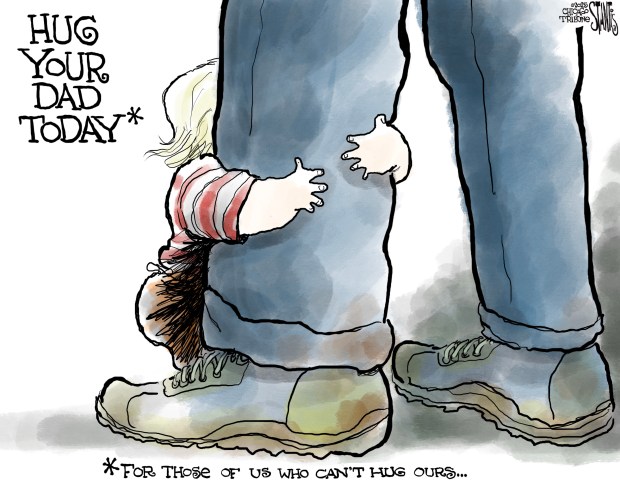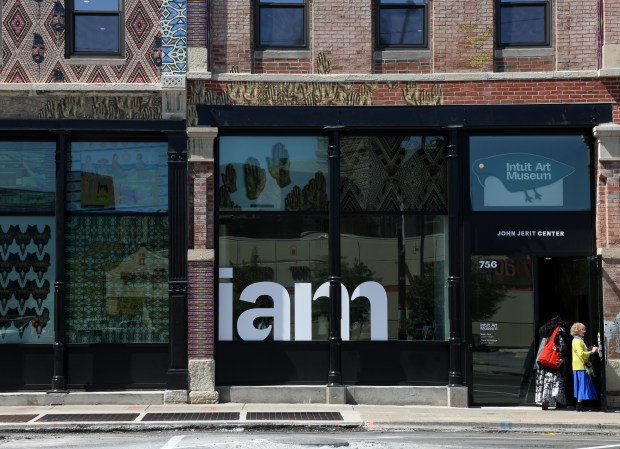My dad was 30 years old and in the Army Air Corps when his troop transport sailed from New York Harbor in August 1942 to join a convoy headed for the Mediterranean Theater — first to North Africa, then later to Italy. He was the main breadwinner of the family, which included his mother, his pregnant wife (my mom) and his six younger siblings. I’m sure many men had similar family experiences to deal with.
After arriving in Italy, Dad was put in charge of a group, mostly mechanics, at a hangar in an airfield and kept track of the parts and supplies needed to repair the planes that landed there. The airfield was generally a few miles behind the front, so as the front moved, the men had to disassemble, then reassemble the hangar. Needless to say it was a grim place with all of the crash landings on and off the field. Dad was struck by how young the pilots were, in their early 20s, but full of vim, vigor and guts. The things they saw, no one should see.
In the fall of 1944, Dad contracted hepatitis and was hospitalized for several months in Rome when he got the terrible news that his only brother, 19-year-old Phil, was shot in the Battle of the Bulge near Nancy, France, and lived for 10 days before dying. My grandmother got the news on Christmas Eve. I can’t imagine how she, our family, and I’m sure other families who lost loved ones, dealt with that.
Dad came back stateside on a hospital ship, which he referred as the ship of horrors, with hundreds of wounded men. The medical staff was very overworked, and he tried his best to help some of the men eat, write a letter or just talk with them.
Unfortunately, by the time the ship landed in New York Harbor in the winter of 1945, Dad had had a relapse. He was sent to a hospital in Spokane. He recuperated for 10 more months before he was finally reunited with his family in Chicago.
We are so grateful he kept a daily diary from the time he left the States till the day he returned. Besides celebrating Memorial Day soon, this September, my Uncle Phil would have turned 100, and some of our family will visit his gravesite to honor him and all the other young men, and would-be dads, who gave their lives for our freedom.
— Patricia Roberts, Lockport
Welcoming refugees
Thank you for the touching account of the Azizi family’s journey to West Ridge (“‘I think it’s here,’” May 18). Zareen Syed’s detailed yet understated narrative, accompanied by John J. Kim’s superb photos, bring to mind the classic Life Magazine era of journalism.
I am reminded of my grandmother’s journey to Chicago just over a century ago after a harrowing encounter with antisemitic soldiers in Pinsk, Belarus, not yet 18 and with no English under her belt. By the time the rest of her family could leave, quotas under the Johnson-Reed Act of 1924 forced them to look elsewhere, so they ended up in Argentina, and my grandmother saw her mother and siblings only one more time.
That the entire Azizi family was able to come to Chicago to support one another is wonderful. The sinister flip side, of course, is that many such families, just as lovely and deserving, may not be able to make it to safety in Chicago or anywhere else due to the irrational and mean-spirited cancellation of refugee programs and the Special Immigrant Visa program in particular.
Again, going back to the last century, one can’t help contemplating the fate of those stranded in Eastern Europe due to U.S. resistance to relaxing immigration quotas in the face of impending doom. Families like the Azizis are extraordinarily brave, resourceful and decent, and there is room for many, many more of them in this vast nation.
— Andrew S. Mine, Chicago
Comparisons erroneous
The usually astute and insightful architecture critic, Edward Keegan, badly misfired in my view in his May 18 article “Pope Leo XIV’s childhood home an example of the ordinary architecture Chicago does well.”
I attribute this to a severe case of Pope Leo XIV mania. Many have understandably succumbed to it. But, please, it’s time to sober up.
I think it’s absurd to compare this very, very modest Dolton house to a building such as H.H. Richardson’s Marshall Field Wholesale Store. Even worse is to link it to the work of Mies van der Rohe. To describe Mies’ work as “ordinary” is grotesque.
Here are some of the best words to describe his work: simple, clean, clear, pure and, above all, elegant. Mies’ work is the opposite of “ordinary.”
— Bill Hinchliff, Chicago
Commencement inspires
On Monday evening, I had the pleasure of attending a high school commencement in the northern suburbs.
I left two hours later very impressed with not only the dignity of the evening, but also the maturity of the student commencement speakers. They articulated wonderful thoughts and concerns for the future and also a retrospective of the past. They were talking to the entire gymnasium and not just to their peers. They sincerely offered credit for their success to their parents and educators.
If these two kids are indicative of even a small percentage of all high school graduates, then there is hope that our country will be successful.
— Cary Barry, Mundelein
Submit a letter, of no more than 400 words, to the editor here or email letters@chicagotribune.com.




